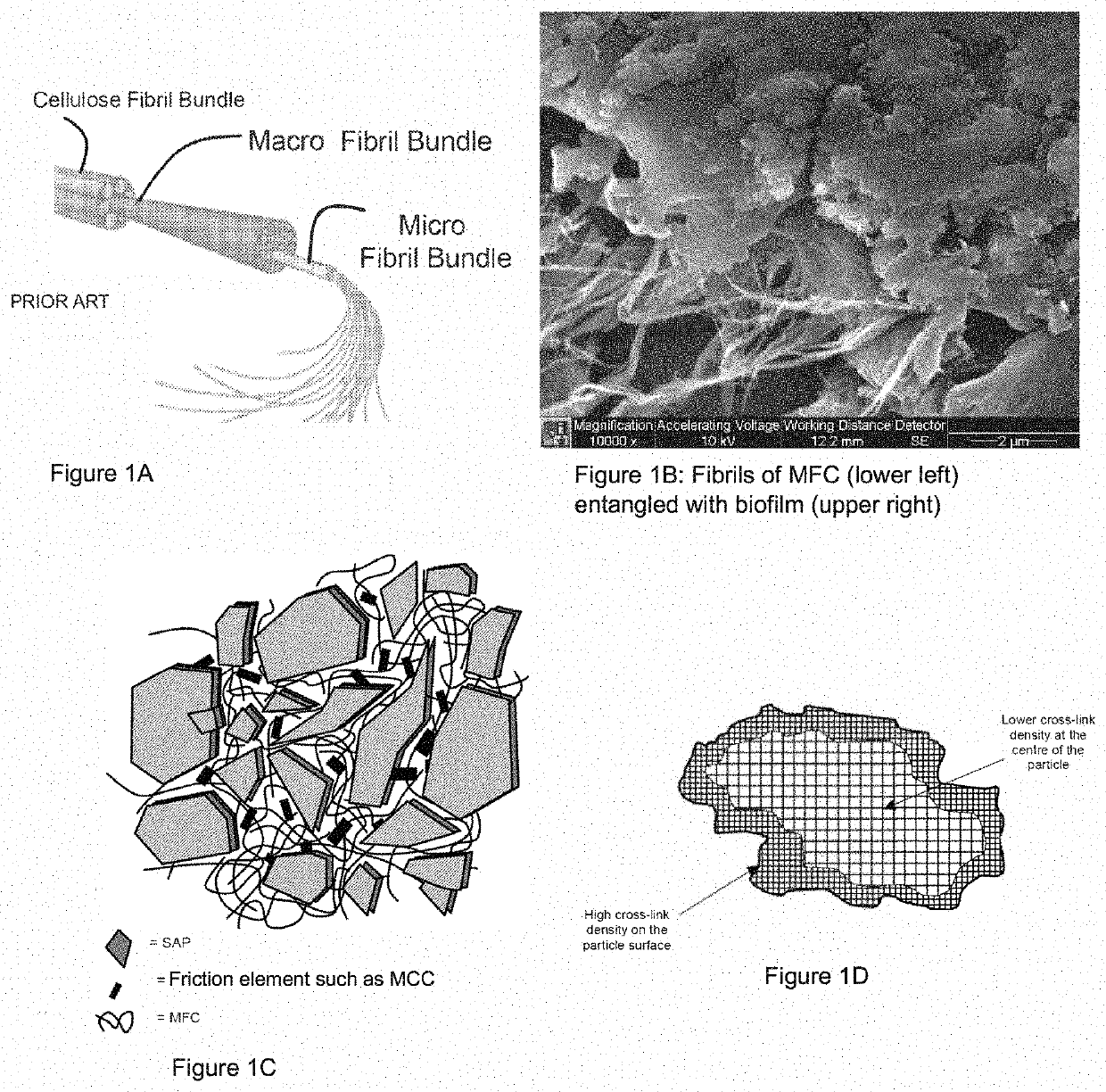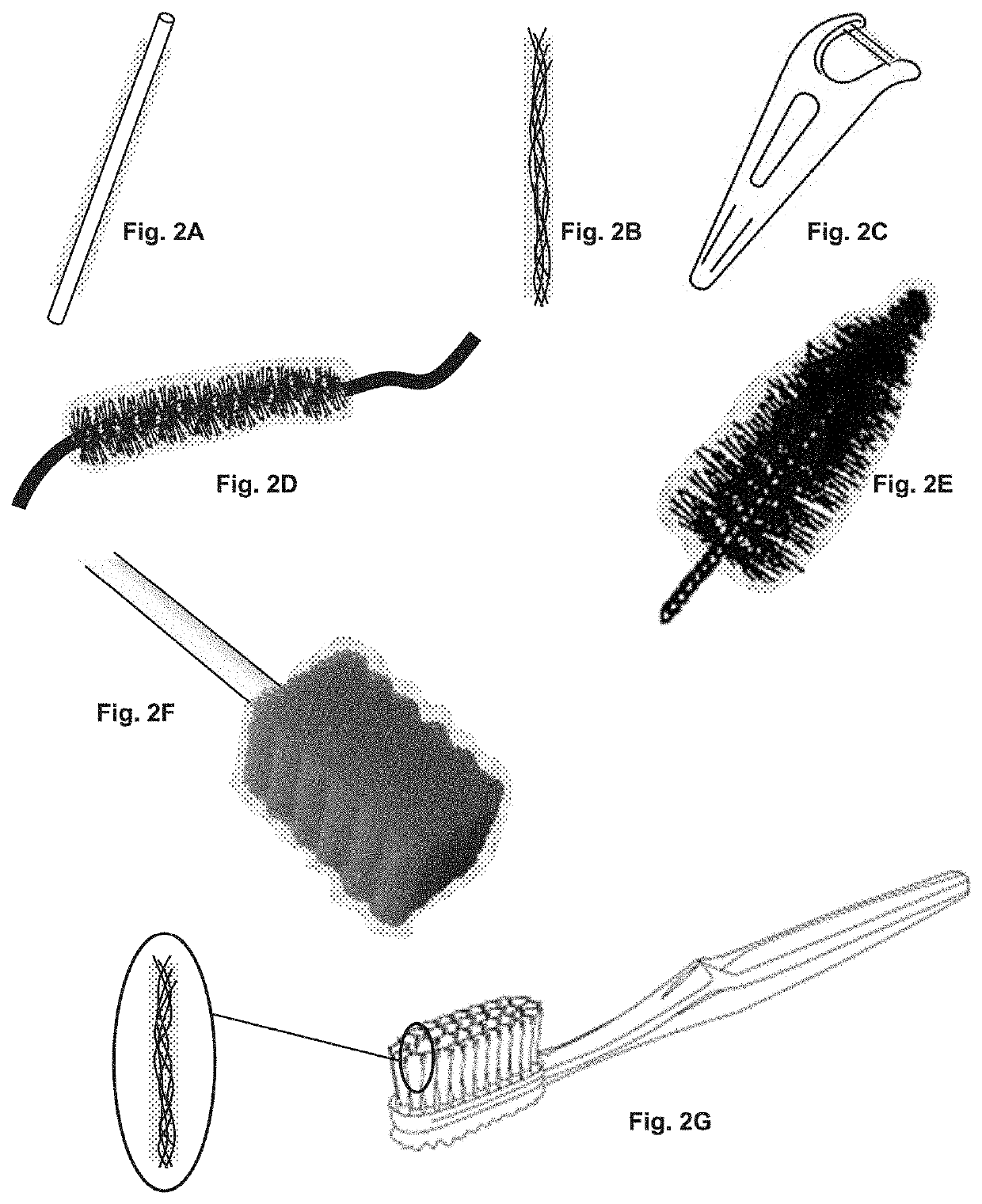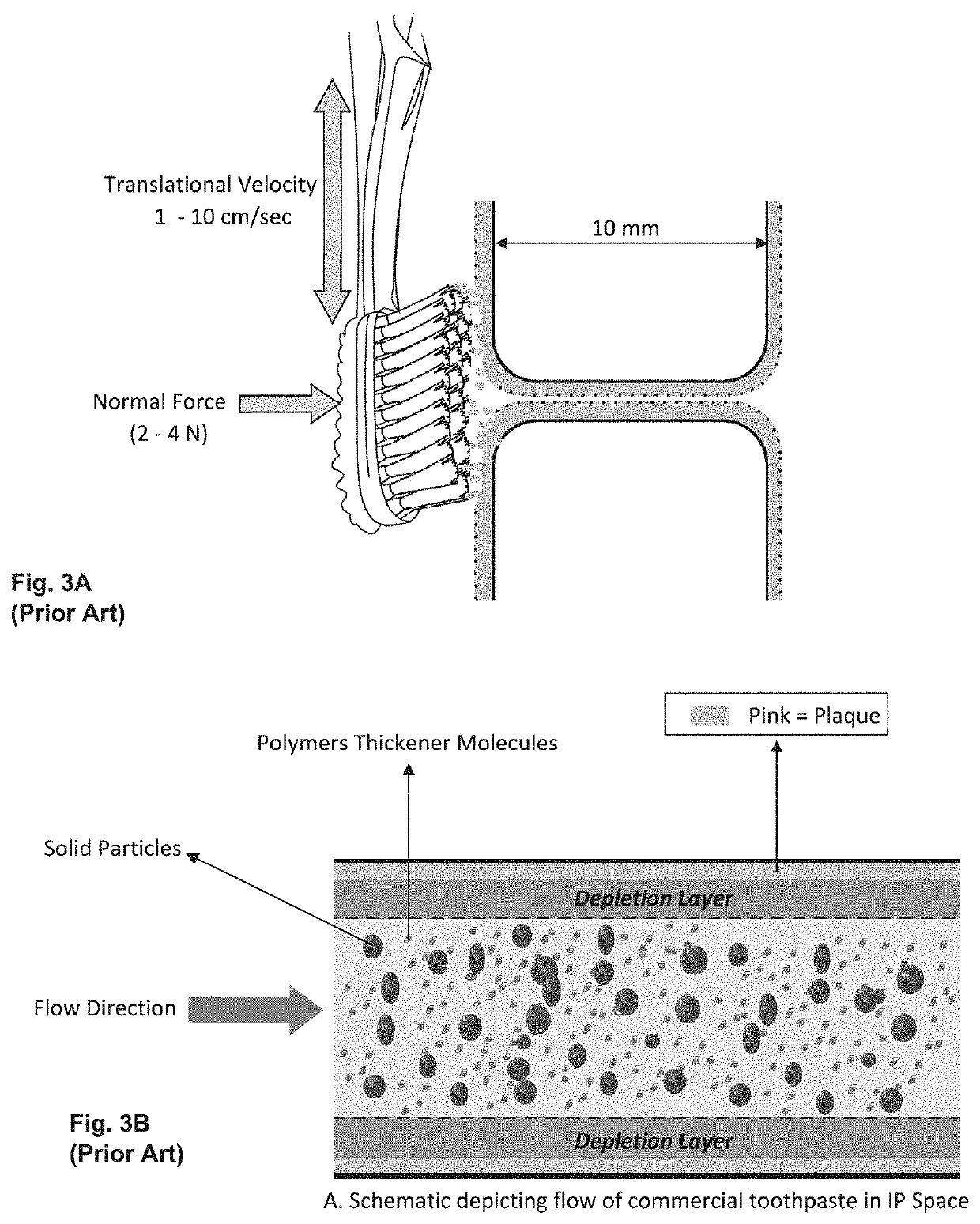Oral cavity cleaning composition method and apparatus
a composition method and oral cavity technology, applied in the field of oral cavity cleaning composition method and apparatus, can solve the problems of inability to promote or assist the physical removal of plaque from teeth, difficult cleaning or removal of biofilm, undesirable plaque on teeth,
- Summary
- Abstract
- Description
- Claims
- Application Information
AI Technical Summary
Benefits of technology
Problems solved by technology
Method used
Image
Examples
example 1
[0234]An experiment was performed comparing two commercial toothpastes with compositions of an embodiment of the invention. FIG. 5A shows a Comparison of BBF removal with Colgate® and Crest® toothpastes vs. composition (NSF) of embodiments of the invention; the control is BBF before cleaning, with Methylene Blue stain. FIG. 5B shows a Comparison of S. mutans biofilm removal with Colgate® and Crest® toothpastes vs. composition (NSF) of embodiments of the invention; the control is S. mutans biofilm before cleaning, with Rose Bengal stain. The results of this example show that none of prior art toothpastes can remove biofilm even when applied at 100%. In contrast the inventive composition is effective in removing the two types of biofilm even used at 50% concentration. This example highlights the main differences between polymeric thickener-based toothpastes of prior art and the inventive composition which possess a special entangled network that resists dilution and can still provide ...
example 2
n of Two Varieties of SAP: Surface Cross-Linked and not Surface Cross-Linked
[0235]Referring now to FIG. 6, experiments were conducted about removal of biofilm from the internal surface of a tube. Specifically, these experimental results compare the effectiveness of SAP-containing compositions in which the SAP particles are surface cross-linked, against the effectiveness of SAP-containing compositions in which the SAP particles are not surface cross-linked. It is believed (although it is not wished to be limited to this explanation) that surface cross-linking of SAP particles results in forming sort of a crust surrounding the interior of the SAP particle. It is believed (although it is not wished to be limited to this explanation) that surface cross-linking results in the SAP particles being better able to maintain their irregular shape during flow or motion past the surface being cleaned, and that the SAP particles do not merge into each other, therefore resulting in more effective ...
example 3
us Effect of the Presence of Carboxymethylcellulose
[0238]An experiment was conducted which illustrates that the presence of CMC (carboxymethylcellulose) hurts cleaning performance. This is shown in FIG. 7. With a 0.01% concentration (100 ppm) of CMC, there was a little bit of reduction in cleaning performance. With a 0.1% concentration (1000 ppm) of CMC, cleaning was poor. This example shows that common ingredients of prior art toothpaste can deteriorate the frictional properties of the composition and their use may limit to very low concentrations, if they must be used. CMC is a common thickeners of many prior art toothpastes and this may explain as to why they are limited in removing biofilm plaques from teeth.
PUM
| Property | Measurement | Unit |
|---|---|---|
| diameter | aaaaa | aaaaa |
| aspect ratio | aaaaa | aaaaa |
| size | aaaaa | aaaaa |
Abstract
Description
Claims
Application Information
 Login to View More
Login to View More - R&D
- Intellectual Property
- Life Sciences
- Materials
- Tech Scout
- Unparalleled Data Quality
- Higher Quality Content
- 60% Fewer Hallucinations
Browse by: Latest US Patents, China's latest patents, Technical Efficacy Thesaurus, Application Domain, Technology Topic, Popular Technical Reports.
© 2025 PatSnap. All rights reserved.Legal|Privacy policy|Modern Slavery Act Transparency Statement|Sitemap|About US| Contact US: help@patsnap.com



